The Life of Cornelia Connelly
1809-1879
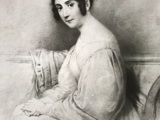
Youth in Philadelphia
Cornelia Augusta Peacock was born in Philadelphia, USA, on 15th January 1809 to Ralph Peacock and Mary Swope Bowen Peacock, the youngest of their six children. Cornelia was close to her family, writing to her niece in later life ‘the older I grow the more intensely I love you all’. After losing her father aged nine and her mother at 14, Cornelia went to live with her half-sister Isabella Montgomery.
Isabella disapproved of Pierce Connelly, the handsome and fascinating Episcopalian clergyman her young sister had fallen in love with. A determined Cornelia went to the house of another of her sisters, Adeline Peacock Duval, to marry Pierce in December 1831.

From Episcopalians to Roman Catholics
By March 1835, Pierce and Cornelia had a two-year-old son named Mercer, and a baby daughter, Adeline. The young family were living in Natchez, Mississippi where Pierce served as minister to Trinity Church. Pierce was dismayed by Protestant hostility towards Catholics. He eventually gave up his position as he and Cornelia became drawn towards Catholicism.
In December 1835, the Connellys prepared to sail across the Atlantic to Italy. Just before they left, Cornelia was received into the Catholic Church at St. Louis Cathedral, New Orleans, months before her husband made this commitment. In Rome, the Connellys met Cardinals, diplomats and Catholic aristocrats, including Lord and Lady Shrewsbury. Cornelia befriended Princess Gwendoline Borghese, the Shrewsburys’ daughter, and accompanied her on visits to the poor.

Pierce's decision and Cornelia's sacrifice
The Connellys’ time in Europe was curtailed by financial difficulties. Returning to America, they settled in Grand Coteau, Louisiana in 1838. Cornelia was a music teacher to pupils of the Sacred Heart Convent while Pierce taught English at St Charles, a new Jesuit College. Their joyful existence raising lively, happy children was shattered by tragic loss. In September 1839 their second daughter, Mary Magdalen, died two months after her birth. Five months later, their youngest boy, John Henry, was severely burned in a terrible accident. Cornelia held him for 43 hours before he died aged two and a half on 2nd February 1840.
Later that year, on 13th October, Pierce told Cornelia of his intention to become a priest and requested that they live together in chastity. Cornelia asked Pierce to think ‘about it deeply and twice over, but if the good God asks the sacrifice I am prepared to make it and with all my heart’. Cornelia was pregnant with their last child, Frank.
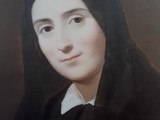
A marriage ends, a society begins
Pierce could only become a priest once Cornelia consented in person to dissolve their marriage and take a vow of chastity. The family once again came to Rome. Pierce and Cornelia signed a deed of Separation in April 1844. The following year Pierce was ordained.
Although she lived with the Sacred Heart nuns in Rome, Cornelia did not feel called to join their order. She envisioned a new society inspired by the Holy Child. Cornelia was persuaded to begin in England where there was a great need for Catholic girls’ education. Bishop (later Cardinal) Nicholas Wiseman encouraged Cornelia to take on St Mary’s Convent in Derby. Cornelia arrived there on 13th October 1846 the head of a community of four women, accompanied by her five-year-old son Frank. Cornelia and her growing Society were praised by inspectors for their work in Derby’s poor schools before circumstances forced them to move to St Leonards-on-Sea.
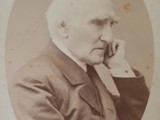
Pierce’s Apostacy and a Court Case
Pierce grew frustrated serving as an assistant chaplain to Lord Shrewsbury and unhappy without his wife. He removed all three of the children from their schools in January 1848 after Cornelia, advised by her chaplain and bishop, refused to see Pierce. He left his position and later renounced the Catholic faith, writing tracts against it. Cornelia hoped to have her children stay with her once the end of her novitiate permitted it. Pierce ignored Cornelia’s offer to meet with him if he would send their daughter Adeline to her. He returned the letters Cornelia sent to their children.
In January 1849 Cornelia was summoned to appear before the Court of Arches as Pierce sued her for restitution of conjugal rights. Pierce’s case against her was not concluded until 24th June 1858 when it was dismissed by the Judicial Committee of Privy Council. Pierce was penniless at this point and Cornelia had to cover the legal fees involved in this lengthy case.
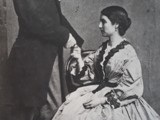
The Connelly Children
Mercer Connelly returned to North America but died in 1853. He was 21 years old. To prevent herself from being overwhelmed with grief when she heard of his death, Cornelia asked her sisters at the Convent of St Leonards-on-Sea to give her Burchett’s Geometry. She made herself work through the problems.
Cornelia saw her two surviving children again when they were adults. Adeline returned to the Catholic Faith and gave charity to the sick and the poor of Paris. Frank became a gifted artist and sculptor. Despite his strong opposition to Catholicism, Frank remained close with his sister, and both were friends to the SHCJ.
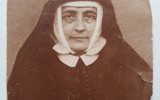
Leading the SHCJ into the future
Despite the inner turmoil she must have felt, Cornelia continued to work hard to establish the Society. The SHCJ’s work was expanded to schools in London, Preston and Blackpool during the 1850s. In 1862, Cornelia’s original intention of an American foundation was realised and in later years she stayed for long periods at schools established in France. Cornelia’s dream of a convent and school rising from the ruins of the Old Palace of Mayfield became a reality in 1872.
Cornelia faced difficulties leading women who shared her strength of character. Emily Bowles, a friend since the first days of the Society, left the SHCJ over a property dispute in Liverpool. The Preston community’s superior, Lucy Wooley, raised opposition to Cornelia in reaction to changes made by a bishop to the SHCJ’s constitutions or Rule and also eventually departed from the SHCJ. Nevertheless, Cornelia held the support of most of her sisters and was elected Superior General in 1874. Sadly, she never lived to see the approval of the SHCJ’s Rule on 7th August 1887.
Cornelia’s strength began to fail in 1878. She fell more gravely ill the following year and died on 18th April 1879 at St Leonards. She was buried at Mayfield, the grounds of the ancient archbishops’ palace which she had given new life to.
